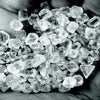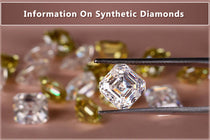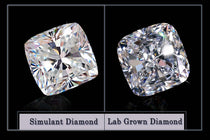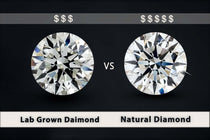VVS1 vs VVS2 Diamonds: Understanding the Subtle Differences
In the world of diamonds, clarity is a critical factor that determines a stone’s quality and, subsequently, its value. Clarity grades are assigned based on the visibility of imperfections within and on the surface of the diamond. Two of the high-grade clarity categories often discussed among enthusiasts and experts alike are VVS1 and VVS2, which stand for very very slightly included.
The primary difference between VVS1 and VVS2 diamonds lies in the size, number, position, and visibility of these inclusions under 10x magnification. A VVS1 diamond typically has inclusions that are extremely difficult to see even for a skilled grader, often being located on the periphery of the stone. On the other hand, VVS2 diamonds may have inclusions that are slightly more visible, yet they still require significant magnification to be seen and are deemed minor. Both of these grades offer excellent visual appearance, but understanding the distinctions between them can be crucial for an informed purchase decision.
When considering the purchase of a diamond, it's important to remember that not everyone is seeking the same level of perfection. Some may prefer the impeccable nature and rarity of a VVS1, while others may choose a VVS2 diamond, which offers slightly lower clarity but still retains a brilliant allure. For those on a budget or looking for an alternative that doesn’t sacrifice style, considering the best diamond replica can offer a similar level of sophistication and sparkle without the high cost associated with natural diamonds of such high clarity grades.
Understanding Diamond Clarity
When selecting a diamond, clarity is a critical factor that significantly influences its beauty and value. I will explore how clarity grades are determined and their impact on a diamond's price.
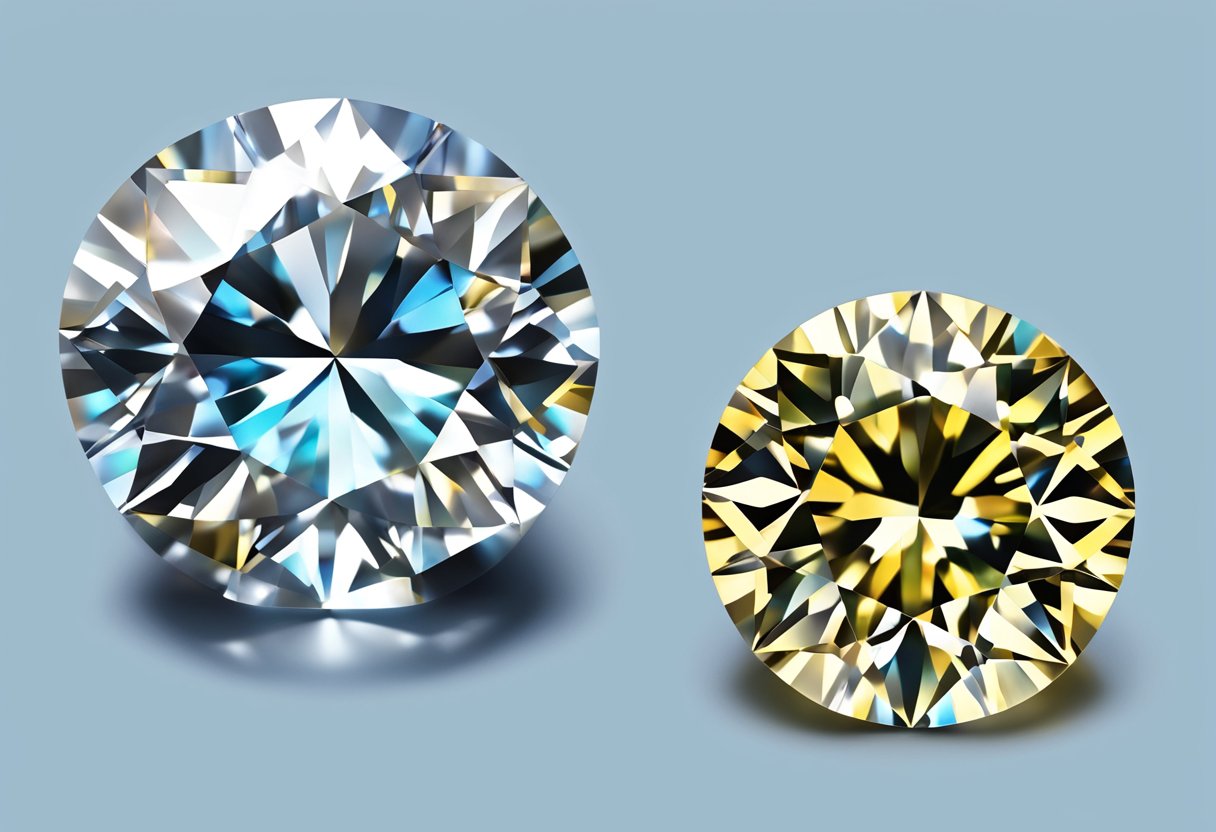
Clarity Scale Overview
Diamond clarity refers to the absence of inclusions and blemishes. The clarity scale, established by the Gemological Institute of America (GIA), ranks diamonds from Flawless (FL) to Included (I). Flawless diamonds are entirely free of internal or external characteristics, while those graded as Internally Flawless (IF) have only surface blemishes. The Very Very Slightly Included categories, VVS1 and VVS2, contain diamonds with minute inclusions that are difficult to see, even under 10x magnification. Very Slightly Included (VS1, VS2) and Slightly Included (SI1, SI2) diamonds have inclusions that are more noticeable under magnification. At the lower end are the Included categories (I1, I2, I3), where inclusions are visible to the naked eye.
Role of Clarity in Diamond Value
The value of a diamond is heavily influenced by its clarity grade. Higher grades such as VVS1 and VVS2 command premium prices due to their rarity and minor inclusions that often require a skilled gemologist to identify. While VVS1 includes diamonds with inclusions only on the bottom half, VVS2 ranked diamonds may have inclusions at the center visible under magnification, influencing their price.
In the clarity grading of diamonds, a jump from one grade to another can have a significant effect on value. For example, the shift from VVS2 to VVS1 clarity is slight in terms of diamond clarity but can lead to a notable increase in price, reflecting in the diamond's overall value. It is important to consider the clarity alongside other factors such as color, cut, and carat weight to determine the true value of a diamond.
Comparing VVS1 and VVS2 Clarit
In the realm of diamond clarity, VVS1 and VVS2 represent the upper echelons of gemstone purity. The differences, while subtle, have implications for value and appearance, discernible under 10x magnification.
VVS1 Clarity Characteristics
VVS1 diamonds are one step closer to perfection on the clarity scale, with inclusions that are incredibly difficult to detect even at 10x magnification. The inclusions in VVS1 graded diamonds—typically pinpoints or minute feathers—are often located at the edges, making them less visible through the table. The strategic position of these inclusions often allows for greater flexibility in setting options, as prongs or bezel settings can further obscure them, assuring the diamond's pristine appearance.
VVS2 Clarity Characteristics
Moving slightly down the clarity hierarchy, VVS2 diamonds still boast a high clarity grade but contain inclusions that are marginally easier to spot under 10x magnification compared to their VVS1 counterparts. Although still minute, the inclusions in a VVS2 diamond, such as additional pinpoints or a small cloud, may be positioned more centrally within the stone. Despite this, it requires a trained eye to identify these differences, especially since these types of inclusions do not generally affect the stone's brilliance.
For those interested in the nuance of diamond grading, understanding how each factor, including clarity grades like VVS, influences a diamond's overall quality and value is essential. You can learn more about how these grades are part of the larger context when considering a diamond’s appeal through comprehensive guides on diamond clarity such as "A Concise Guide to the 4Cs".
Factors Affecting VVS Diamond Appearance
In understanding the appeal of VVS (Very Very Slightly Included) diamonds, it becomes essential to recognize how certain factors can influence their appearance. These include elements such as cut and color, which are paramount not only in their aesthetic appeal but also in their overall value.
Influence of Cut on VVS Diamonds
The cut of a VVS diamond profoundly affects its brilliance and fire. A well-cut VVS diamond will exhibit high levels of light reflection, leading to that sought-after sparkle. The precision in the cut allows for optimal light entry and dispersion, accentuating the clarity grade's excellence. On the other hand, a poorly cut VVS diamond might not reflect light as effectively, which means it could lack the brilliance one would expect from such a high-clarity stone. The technique and skills applied in the diamond cut process are crucial to maximizing the stone's visual effects.
Impact of Color on VVS Diamonds
Moving on, the color or, more specifically, the lack of it, can enhance the perceived clarity of VVS diamonds. VVS stones are located near the top of the color grading scale, where differences can be subtle yet impactful. The presence of any color tinges can detract from the clear and luminous appearance that characterizes these diamonds. Thus, when considering VVS diamonds in conjunction with color grades, buyers should aim for higher color grades to complement the stone’s clarity — a 'D' or 'E' color grade can amplify the inherent purity of a VVS diamond.
The interplay of both cut and color within VVS diamonds makes them some of the most desirable gemstones, glowing with unmatched translucence and refracting light into a spectacle of dazzling beauty. Proper attention to these characteristics is essential in fully appreciating and selecting a VVS diamond that truly lives up to its potential.
Price Analysis of VVS1 vs VVS2 Diamonds
When evaluating the prices of VVS1 and VVS2 diamonds, clarity grades are a primary factor. While both grades signify high quality, subtle differences between them can influence their value.
Cost Influences in VVS Grades
The VVS1 diamonds typically represent a higher tier on the clarity grading scale compared to VVS2 diamonds. Within VVS (Very, Very Slightly Included) grades, VVS1 signifies a higher clarity as the inclusions are so minute they are difficult to see even under 10x magnification and are typically located closer to the edge of the stone, making them less visible. In contrast, VVS2 diamonds may have inclusions more centrally located or slightly larger, though they still remain invisible to the naked eye. This slight variance in inclusion placement and size can lead to a price difference between VVS1 and VVS2 diamonds, with VVS1 stones generally commanding a higher price.
Pricing Considerations for Buyers
Buyers should consider that the price of VVS diamonds—whether VVS1 or VVS2—is not solely determined by clarity. Although the clarity grade is significant, other factors like cut, color, carat weight, and the specific type of inclusions affect pricing. For instance, a VVS1 diamond may be less valuable than a VVS2 diamond with a better cut or color grade. Potential buyers must balance their desire for a higher clarity grade against the overall appearance and value of the diamond they choose. The price difference between VVS1 and VVS2 may be justifiable by personal preference for an ostensibly flawless stone, but the visual difference to the unaided eye is often indistinguishable.
It's essential for investors to compare diamonds selectively, analyzing the particular qualities of each stone rather than making assumptions based on clarity grades alone. This detailed scrutiny ensures a worthwhile purchase that aligns with an individual's value perception and budget.
Selecting the Right VVS Diamond
When deciding between VVS1 and VVS2 diamonds, it's crucial to take into account factors such as cut quality, color grades, and carat weight. My aim is to guide you through these nuances, ensuring you make an informed decision tailored to your preferences.
Expert Insights on VVS Diamonds
VVS diamonds are categorized into two subdivisions: VVS1 and VVS2. The primary difference lies in the location of inclusions or imperfections, which are challenging to detect under 10x magnification. As a gemologist, I can attest to the fact that VVS1 diamonds typically have inclusions located towards the edge of the stone, making them less visible than those in VVS2 diamonds, where inclusions are often more centrally positioned or larger.
When considering the cut quality, it's essential to note that a well-cut VVS diamond will refract and reflect more light, which often makes inclusions even harder to spot with the naked eye. The diamond shape also plays a role; certain shapes, like the round brilliant, can mask inclusions more effectively than others, like emerald cut.
Considerations Beyond Clarity
While clarity is a vital factor, other aspects such as color grades and carat weight contribute to the overall appearance and value of a VVS diamond. Color grades range from D, which is colorless, to Z, which has noticeable color. Generally, a higher color grade can complement the high clarity of VVS stones, enhancing their beauty. However, in larger carat weights, a slight tint in color may become more perceivable irrespective of the clarity grade.
The choice between VVS1 and VVS2 diamonds should also take into account the diamond's intended setting and use. For example, in solitaire engagement rings, where the diamond is the focal point, opting for a VVS1 might present a discernible improvement, especially if it's a larger carat weight. In contrast, for smaller stones or pieces where the diamond is one of many, like in a pavé setting, VVS2 can often offer better value without compromising on the visual allure.
By considering these detailed specifics from an expert's perspective, you can select the right VVS diamond that not only meets quality expectations but also suits your personal style and budget.
Certification and Authentication of VVS Diamonds

When purchasing a diamond, understanding the grading and certification is crucial. These attest to the stone's quality and authenticity, impacting its value and your investment.
Understanding GIA Certifications
I take a close look at certifications from the Gemological Institute of America (GIA), as they set the benchmark for diamond grading. A GIA report details crucial aspects like cut, color, clarity, and carat weight—known as the 4Cs. When it comes to VVS diamonds, two near-flawless ratings exist: VVS1 and VVS2. VVS1 diamonds are of a higher clarity grade than VVS2. Both have minute inclusions that are difficult to see even under 10x magnification, but VVS1 inclusions are slightly harder to find than those in VVS2 diamonds.
The certification of VVS diamonds by the GIA is an assurance of their microscopic flawlessness to a significant extent. The GIA's detailed approach in analyzing and noting even the minutest details ensures that the buyer can differentiate between VVS1 and VVS2 diamonds with confidence. Additionally, the presence of a respected GIA report provides a solid basis for verifying a diamond's value and authenticity.
Authenticating VVS diamonds, especially, requires a reliable and authoritative eye. The Gemological Institute of America is recognized worldwide for its expertise and stringent grading standards. Therefore, obtaining a GIA certification is a testament to the stone's quality. For those looking at certifications beyond the GIA, comparisons such as IGI Certification vs GIA could be insightful, showcasing the GIA’s stricter, globally recognized grading system, ensuring that the diamond's qualities are unambiguously authenticated.
In summary, the GIA’s rigorous certification process authenticates the high quality of VVS1 and VVS2 diamonds, providing you with confidence in your fine jewelry investment.
Frequently Asked Questions
In the complex world of diamond grading, where each minute detail can significantly affect a gemstone's quality and price, understanding the nuances between clarity grades can make all the difference in selecting the perfect diamond.
What are the main differences between VVS1 and VVS2 clarity grades?
VVS1 and VVS2 stand for "Very, Very Slightly Included" grades, which refer to the presence of minuscule inclusions. The main difference lies in the visibility and position of these inclusions; VVS1 inclusions are typically harder to spot under 10x magnification compared to VVS2. Inclusions in VVS1 are often near the edge of the diamond, making them easier to hide under prongs when set.
How does VVS2 clarity compare with D color in diamonds?
VVS2 clarity indicates very minute inclusions that are challenging to see, while D color represents the highest grade on the color scale, meaning the diamond is colorless. Combining a VVS2 clarity with a D color can result in a highly valuable and desirable diamond, as it possesses both a high clarity grade and the most sought-after color designation.
How does a VVS1 grade affect the value and appearance of a diamond?
A VVS1 grade can significantly increase a diamond's value due to its near flawless appearance. The inclusions are so slight that they have little to no effect on the diamond's brilliance and sparkle, maintaining the stone's integrity and beauty.
Is it better to choose a VVS1 or an internally flawless diamond?
The choice between a VVS1 and an internally flawless (IF) diamond often comes down to personal preference and budget. IF diamonds have no visible inclusions under 10x magnification, making them rarer and more expensive. However, the minute differences between VVS1 and IF are often indiscernible to the naked eye.
How common are VVS2 diamonds in the market?
VVS2 diamonds are quite common in the market compared to higher clarity grades. They offer a delicate balance between minimal inclusions and cost, making them a popular choice for those seeking high-quality diamonds without the premium price associated with rarer grades.
Between VVS1 and VS1 clarity grades, which one offers a better value?
Deciding between VVS1 and VS1 for better value can be subjective. VVS1 diamonds contain inclusions that are only slightly less visible than those in VS1 diamonds but can command a higher price. Many consumers find that VS1 diamonds offer a more appealing balance of clarity, imperceptibility of inclusions, and price.
Checkout some of our top collections:

